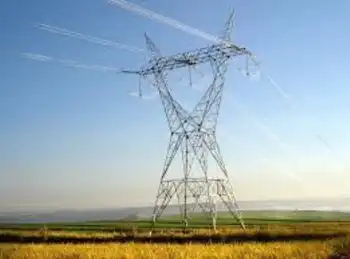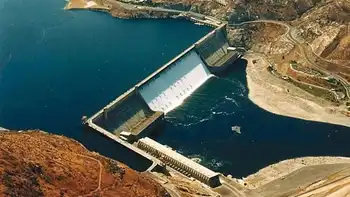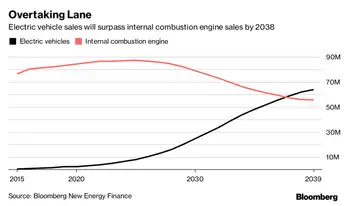How much can wind power the grid
By American Scientist
CSA Z463 Electrical Maintenance
Our customized live online or in‑person group training can be delivered to your staff at your location.

- Live Online
- 6 hours Instructor-led
- Group Training Available
Known as the Udall-Platts amendment, the legislation calls for more than 10 percent of the nation's electric power to come from renewables by 2020. Whether the Senate will endorse this idea remains to be seen, but many states have already put in place similar, if not more aggressive, "renewable portfolio standards," as they are called, without waiting for the federal government to act.
Currently, 25 states have mandated that a sizeable fraction of the electric power their utilities produce come from renewable sources, such as wind turbines, photovoltaic panels and the combustion of landfill gas. The economics of these technologies suggest that wind generation is bound to play the largest role of the three, but the inherent intermittency of the wind remains a major stumbling block. How much can wind turbines be relied on without causing havoc when the breeze stops?
Advocates for wind energy tend to cast the answer in terms of the amount of energy being provided to the grid. If the "penetration" of wind energy is less than some threshold, they argue, the system can manage it at negligible cost, just as it handles the unavoidable variability in the load.
Beyond some modest penetration level, however, electric utilities are bound to get into trouble if they don't carefully plan how to integrate wind into the mix of power sources. Judging the degree of penetration that can be accommodated is tricky, but wind-energy proponents like to point out that Denmark currently gets about a fifth of its electrical energy from the wind.
Joseph F. DeCarolis, of the Atmospheric Protection Branch of the U. S. Environmental Protection Agency's Office of Research and Development, takes issue with this picture of the situation.
DeCarolis studied the problem in depth for his Ph.D. in engineering and public policy. He says that when he began his research at the turn of the millennium, most people were relying on nothing more than "back-of-the-envelope calculations." He points out that some analysts had concluded that the intermittency of the wind didn't much matter if the turbines were distributed over a sufficiently wide geographic area.
But that notion "didn't really sit right" with DeCarolis and his thesis advisor, David W. Keith, now of the University of Calgary, so they created a numerical model to put the assertion to the test.
From their model runs, they concluded that there is always some intermittency cost, even if wind provides just a tiny fraction of the total power on the grid.
DeCarolis estimates that the penalty would, in general, be something between one and two cents for each kilowatt-hour of energy produced in this way. That's a small but still significant component, given that the price of wind-generated electricity would otherwise be something like five cents per kilowatt-hour.
Denmark has managed to integrate a large number of wind farms into its electric grid because, as DeCarolis says, "there's a ton of hydro on it, and it's very easy to dispatch hydro to make up the difference."
In particular, Denmark's electric grid is connected to that of Norway and Sweden, where hydroelectric plants can easily cut back on production when Danish winds are strong and boost their output when the breezes to the south abate. Balancing wind and hydroelectric power generation in this way allows the two renewable-energy sources together to provide cheap and reliable power to the grid at all times.
But what can an electric utility do with wind if its grid lacks river-spanning hydroelectric-power plants like those found in Norway and Sweden? Plenty.
It can, for example, turn to what's known in the industry as "pumped hydro," whereby water generates power as it flows through turbines from a reservoir at high elevation to a lower one. The same water can be pumped back upward using the electricity available at times of lessened demand, allowing the excess energy to be stored. The Bath County pumped-storage station in the Allegheny mountains of Virginia, built in the wake of the 1970s energy crisis, is one prominent example of such an installation.
Another well-known technique for dealing with variability on the electrical grid is called compressed-air energy storage. The basic strategy is to use excess electric power to run compressors that inject air into underground storage fields. The air is held there in a manner similar to the way natural gas is routinely stored underground. Then, when electricity is needed, this compressed air is fed into turbine generators that burn natural gas. Such gas turbines normally expend much of the energy in their fuel compressing the air prior to combustion.
Using pre-compressed air allows them to save anywhere from one-half to two-thirds of their fuel costs.
"In today's environmental world, you don't have much luck finding a place where you can bulldoze the top of a mountain to create a reservoir," explains Kent Holst, former general manager of the municipal electric utility company in Traer, Iowa. Holst is currently working with the Iowa Association of Municipal Utilities to develop a hybrid facility in his state where the energy from a wind farm will be used to compress air for later use in gas turbines.
This "Iowa Stored Energy Plant," as it is dubbed, is still in early planning stages, but Holst reports that feasibility studies suggest it will have good economic return. And it will help Iowa utilities in a way that is less easy to put a dollar value on: "We feel a strong obligation to do what our customers want—and our customers want greener energy."
In other parts of the world, proposals for storing the energy from the wind sometimes take a completely different shape. For example, managers of the Sorne Hill Wind Farm, which was erected in Ireland in 2004, are planning to install a huge battery to help even out variations in generation.
The device they plan to use is known as a vanadium redox flow battery, which in some ways resembles a giant fuel cell, except that it can be charged and discharged repeatedly. A recent feasibility study suggests that the building-size battery, which will be able to hold 12 megawatt-hours of energy, should pay for itself within 10 or 15 years.
Although DeCarolis is skeptical that such batteries could solve the problem at the largest scales, he is convinced that the variation in the output of wind turbines is something that can be managed, one way or another.
"You can compensate for the intermittency at very reasonable cost," he says, suggesting that the on-again-off-again quality of this resource should not constitute a major roadblock.
But considerable resistance will surely continue to come from people, including some environmentalists, who object to the visual appearance of wind turbines on the horizon—a sight that others find quite pleasing.
It seems the future of this emerging industry may depend more on aesthetics than on economics.











